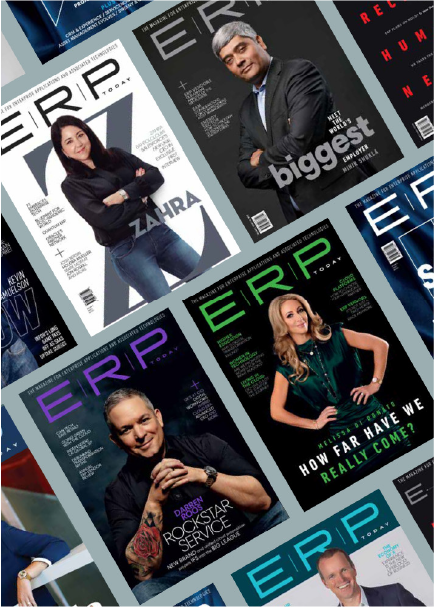The countdown is on. With SAP’s mainstream support for ECC (ERP Central Component) ending in 2030, businesses delaying the transition to SAP S/4HANA are not merely postponing an upgrade; it’s an invitation to escalating risks, missed opportunities, and potential stagnation in an increasingly competitive digital landscape.
In an interview with ERP Today, Thomas Failer, CEO of Data Migration International, argues that the time to migrate to SAP S/4HANA is not approaching—it is here.
The Tangled Web of Legacy Data
According to Failer, the pervasive problem of legacy data lies at the heart of the urgency. He explains: “Decades of operational history often reside within SAP ECC systems, much of it outdated, redundant, and unstructured. This digital baggage acts as a significant anchor, inflating costs, creating compliance nightmares, and severely hindering digital transformation initiatives.”

Moreover, maintaining these sprawling legacy environments consumes a lion’s share of IT budgets – often as high as 60-80% – leaving scant resources for strategic innovation. The sheer volume of this data slows down system performance, complicates upgrades, and makes extracting meaningful insights a herculean task.
Failer added, “Legacy data is often riddled with inconsistencies, duplicates, and quality issues. This “dirty data” undermines the accuracy of analytics, cripples the potential of AI and automation, and leads to flawed decision-making.”
Due to these factors, compliance becomes a precarious tightrope walk as outdated systems struggle to meet evolving regulatory demands like the General Data Protection Regulation (GDPR) and California Consumer Privacy Act (CCPA), exposing businesses to hefty fines and reputational damage. The lack of proper data governance and retention management within legacy ECC systems makes audits and legal discovery processes costly and time-consuming.
Clean Core and the Imperative of Clean Data
Failer points to a compelling alternative to solve this problem: SAP’s strategic direction, embodied in the “Clean Core” and “Composable Enterprise” vision. “This future-ready architecture emphasizes a modular, flexible, and agile approach to enterprise resource planning,” he notes. “The Clean Core advocates for a standardized, lean digital foundation in SAP S/4HANA, minimizing customizations and ensuring seamless upgrades, while the Composable Enterprise envisions a landscape of interoperable business capabilities that can be assembled and reassembled as needed.”
“Dirty data” undermines the accuracy of analytics.
However, the realization of this transformative vision is intrinsically linked to the quality of the underlying data. “You simply cannot build a Clean Core on a foundation of dirty, outdated data,” Failer says. “Migrating massive volumes of legacy baggage into SAP S/4HANA defeats the purpose, bloating the system and perpetuating existing inefficiencies.”
Similarly, a Composable Enterprise relies on consistent, high-quality data flowing seamlessly between its modular components. Thus, fragmented or unreliable data undermines the agility and flexibility this architecture promises.
The JiVS Solution
Data Migration International (DMI) offers a powerful solution to navigate this complex transition: the JiVS Information Management Platform (IMP). Failer states, “JiVS provides a strategic and intelligent approach to managing legacy data, enabling businesses to break free from the constraints of their SAP ECC systems and embrace SAP S/4HANA with confidence.”
The core principle of JiVS is the separation of historical data from active applications. Instead of a “lift and shift” approach that blindly migrates everything, JiVS extracts all legacy data (SAP and non-SAP) at the application layer, preserving its full business context. This data is then securely archived in a legally compliant and audit-proof manner. This means businesses retain 100% access to their historical data for audits, compliance, and operational needs, even after the legacy ECC system is decommissioned.
“With the historical data safely managed, JiVS enables businesses to selectively migrate only the necessary, high-quality data to SAP S/4HANA,” Failer says. “This targeted approach drastically reduces data volume – often by up to 90% – streamlining the migration process, accelerating timelines, and significantly lowering costs.”
DMI estimates that JiVS can reduce overall IT operating costs by up to 80% by enabling the retirement of expensive legacy systems and optimizing data storage. Furthermore, JiVS incorporates automated data quality analysis and cleansing, ensuring that only clean, relevant, and enriched data makes its way into the new SAP S/4HANA environment. “This supports SAP’s Clean Core principles and lays a solid foundation for leveraging advanced analytics, AI, and automation,” adds Failer.
Overall, the solution’s benefits include:
- Exceptional data transfer speed up to 30TB/day
- Zero business disruption and no downtime
- No need for costly or lengthy pre-projects
- More than 3,000 successful projects worldwide and a robust global partner network
- Over 3,000 supported business objects
The Fast Track to Freedom
The transformative power of DMI’s approach is evident in the success stories of companies that have embraced JiVS. Failer shares the compelling example of a leading automotive company that successfully retired its SAP ECC system in only four months.
JiVS provides a strategic and intelligent approach to managing legacy data.
He notes that faced with the looming 2030 deadline and the burden of a complex legacy landscape, the company partnered with DMI to implement JiVS. “By separating and archiving their vast historical data, we could significantly reduce the scope and complexity of their SAP S/4HANA migration, allowing them to transition to the modern platform at an unprecedented speed, freeing them from the constraints of their legacy system, reducing IT costs, and gaining the agility needed to thrive in a rapidly evolving industry,” Failer says.
The Time for Action is Now
SAP’s vision for a Clean Core and Composable Enterprise offers a path to agility and innovation, but it demands a commitment to clean, high-quality data, which can be provided by DMI’s JiVS solution, which addresses the challenges of legacy data, streamlines SAP S/4HANA adoption, and unlocks significant cost savings. “The ticking clock is a clear call to action: businesses still on SAP ECC must act now to secure their future and embrace the transformative power of SAP S/4HANA,” Failer concludes.
What This Means for ERP Insiders
Historization prevents vendor lock-in and supports business agility. Recognize the strategic advantage of historization – separating and archiving historical data in a vendor-neutral format. By utilizing solutions like JiVS IMP, users gain independence from the core operational system for accessing and managing historical records. This prevents vendor lock-in, as your valuable historical data remains accessible even if you choose to migrate to a different ERP system in the future. Furthermore, having a readily accessible, well-governed historical data archive enhances business agility by providing a comprehensive and compliant data foundation for analytics, reporting, and responding to evolving business needs without impacting the performance or complexity of your active ERP system.
Accelerate SAP S/4HANA migration while ensuring compliance. To expedite your move to SAP S/4HANA and maintain robust compliance, prioritize the separation and secure archiving of historical data. Retaining historical data in an audit-proof environment separate from your active SAP S/4HANA system allows you to meet regulatory requirements without bogging down your new environment with legacy baggage.
Clean Core is impossible without clean data. Avoid the temptation of a “lift and shift” approach. Instead, invest in data cleansing and harmonization before migration. By ensuring that only clean, standardized data populates your SAP S/4HANA system, you can minimize customizations, streamline processes, and fully leverage the benefits of the Clean Core architecture, including easier upgrades and faster adoption of new innovations.






